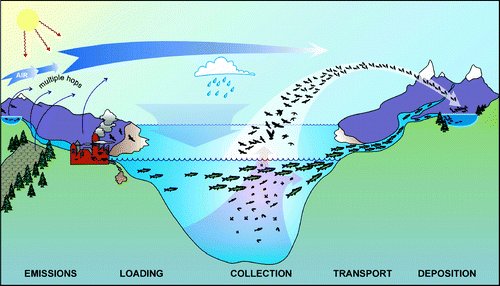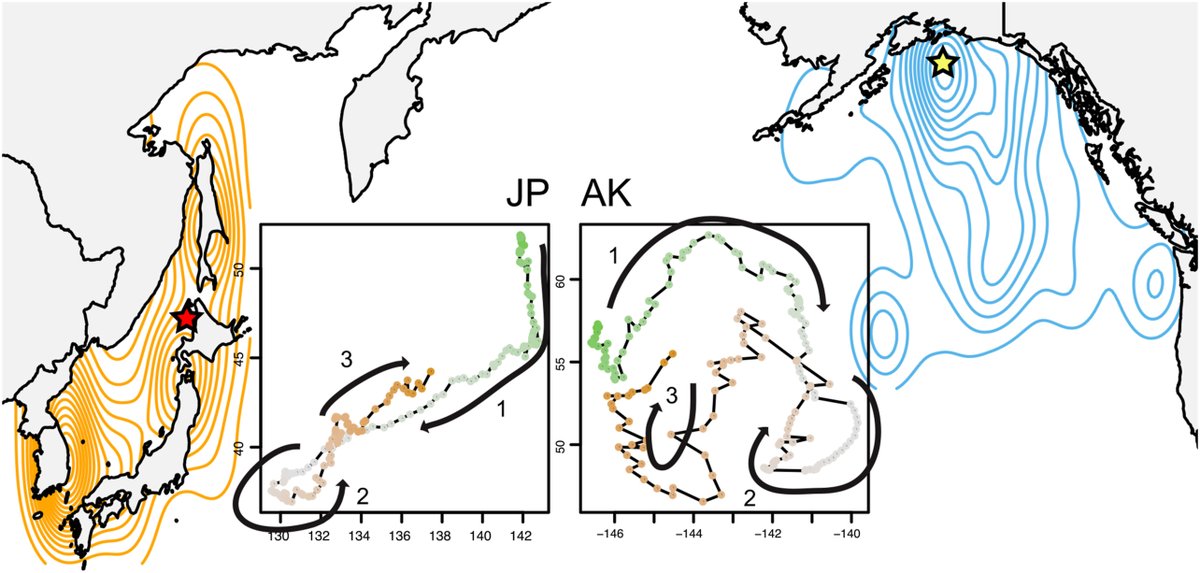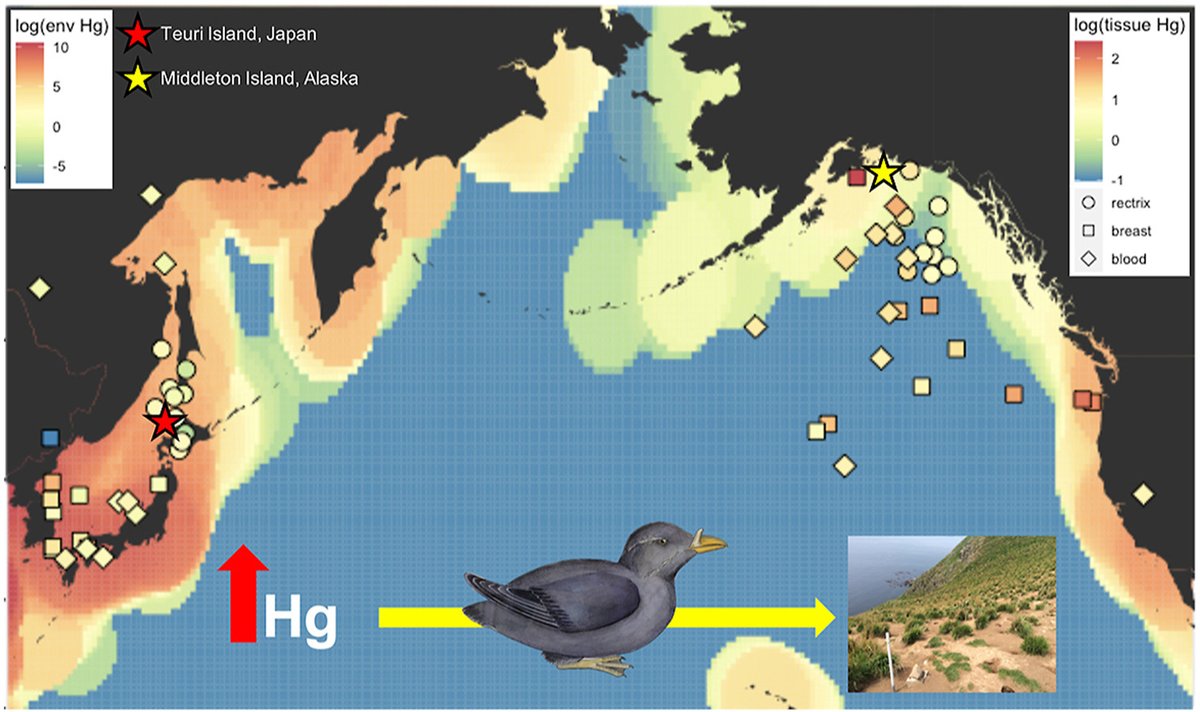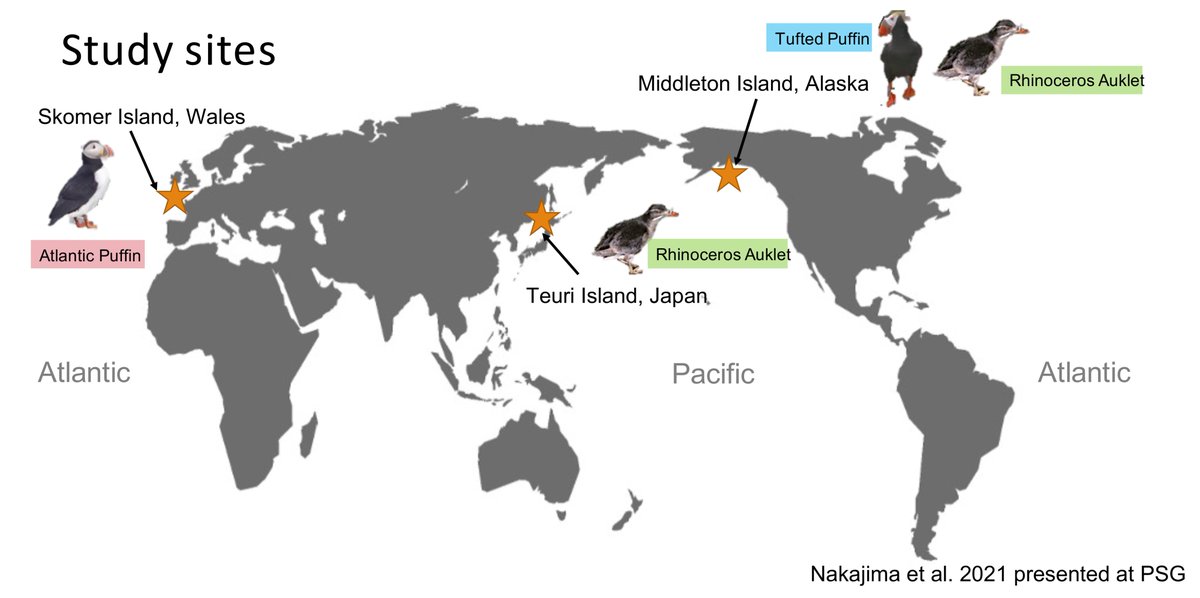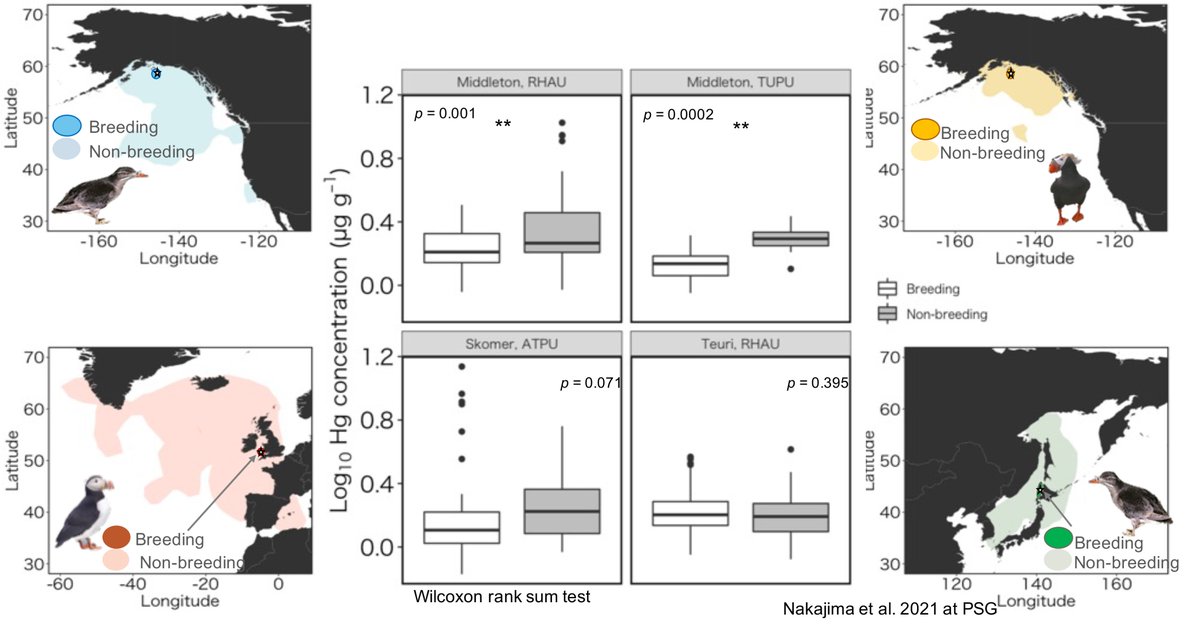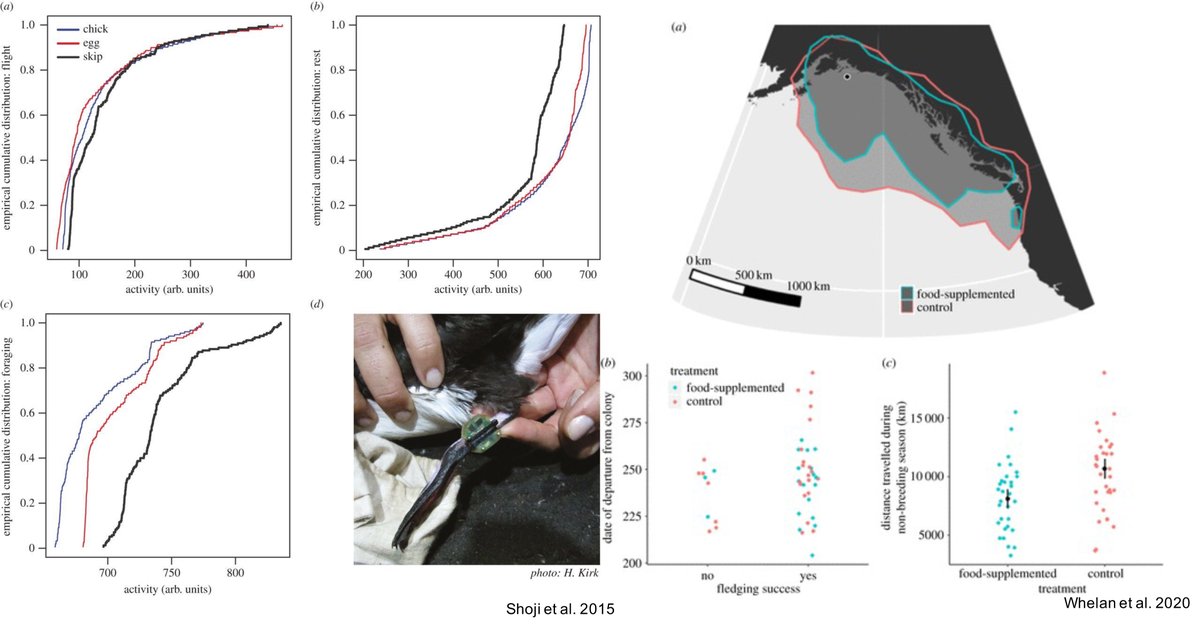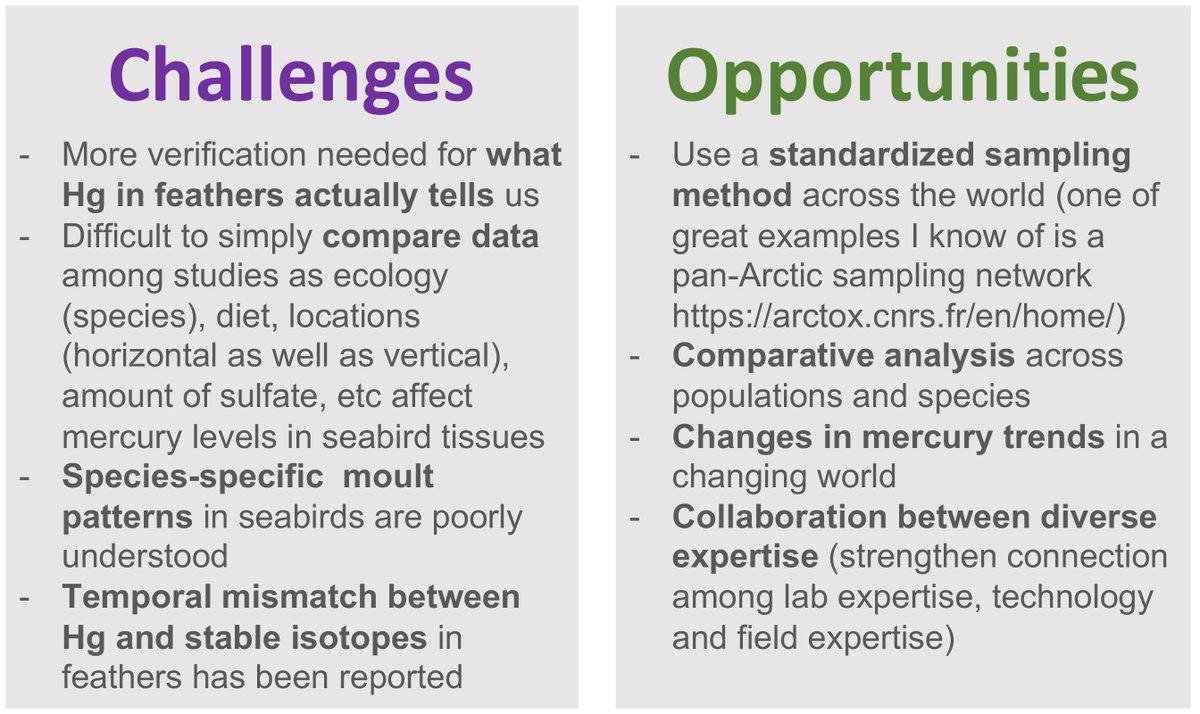1/11. #WSTC7 #ContSesh2 Seabirds accumulate & transport contaminants, acting as biovectors.
Biovector transport is nicely illustrated on this fig from Blais et al. 2007. But how effects at distant locations (e.g. wintering grounds) affect seabird mercury biotransport is unclear.
Biovector transport is nicely illustrated on this fig from Blais et al. 2007. But how effects at distant locations (e.g. wintering grounds) affect seabird mercury biotransport is unclear.
2/11. We measured geographic variation of #mercury in Rhinoceros auklets across the Pacific, & compared the impact of trans-ecosystem #biotransport at 2 locations under high (west Pacific) or low mercury levels (east Pacific) by tracking non-breeding movements. #WSTC7 #ContSesh2
3/11. We investigated mercury transfer pathway from mercury measurements (1) in the breeding & non-breeding local marine environment (as a potential source), (2) in plants at the colonies, and (3) in bird tissues reflecting different exposure times/locations. #WSTC7 #ContSesh2
3/11. We investigated mercury transfer pathway from mercury measurements (1) in the breeding & non-breeding local marine environment (as a potential source), (2) in plants at the colonies, and (3) in bird tissues reflecting different exposure times/locations. #WSTC7 #ContSesh2
4/11. We found that mercury concentrations in #seabird tissues reflected those in the environment, as shown in this figure. This suggests #seabirds can transport mercury over long distances and deposit it in terrestrial ecosystems. #WSTC7 #ContSesh2
5/11. More details in our new paper https://authors.elsevier.com/c/1c~IczLNSYJfV .">https://authors.elsevier.com/c/1c~IczL...
This further supports the idea of using #seabirds as marine mercury indicators. #WSTC7 #ContSesh2
Thanks @ArcticEcology, @killerwhelan and many others taking part in this work.
This further supports the idea of using #seabirds as marine mercury indicators. #WSTC7 #ContSesh2
Thanks @ArcticEcology, @killerwhelan and many others taking part in this work.
6/11. #WSTC7 #ContSesh2 We further expanded this research, by C. Nakajima, to look at the spatial distribution of mercury in 3 auks species (Tufted #puffins, Rhinoceros auklets, Atlantic puffins), in collaboration with @ArcticEcology, @AnnetteFayet, @killerwhelan & many others.
7/11. Levels of mercury in auk feathers in both the Pacific and Atlantic Oceans were within reported values, but above thresholds for adverse effects. #WSTC7 #ContSesh2
8/11. #WSTC7 #ContSesh2 While mercury levels in environment & seabird tissues are correlated, spatial distribution of mercury, species (ecology) & other factors likely affect #seabirds mercury levels. So we need a standardised method for using #seabirds as mercury indicators.
9/11. A possible key factor in this context is carry-over effects, which can affect wintering distribution (right), breeding phenology & #behaviour (left), & diet, all of which may affect mercury levels in #seabirds. We aim to study this in future. #WSTC7 #ContSesh2
10/11. #WSTC7 #ContSesh2 To conclude, combining movement and chemical markers of marine predators can help monitoring global mercury levels.
Here, some challenges and opportunities in my view.
Here, some challenges and opportunities in my view.

 Read on Twitter
Read on Twitter